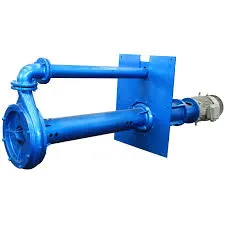English
- Afrikaans
- Albanian
- Amharic
- Arabic
- Armenian
- Azerbaijani
- Basque
- Belarusian
- Bengali
- Bosnian
- Bulgarian
- Catalan
- Cebuano
- Corsican
- Croatian
- Czech
- Danish
- Dutch
- English
- Esperanto
- Estonian
- Finnish
- French
- Frisian
- Galician
- Georgian
- German
- Greek
- Gujarati
- Haitian Creole
- hausa
- hawaiian
- Hebrew
- Hindi
- Miao
- Hungarian
- Icelandic
- igbo
- Indonesian
- irish
- Italian
- Japanese
- Javanese
- Kannada
- kazakh
- Khmer
- Rwandese
- Korean
- Kurdish
- Kyrgyz
- Lao
- Latin
- Latvian
- Lithuanian
- Luxembourgish
- Macedonian
- Malgashi
- Malay
- Malayalam
- Maltese
- Maori
- Marathi
- Mongolian
- Myanmar
- Nepali
- Norwegian
- Norwegian
- Occitan
- Pashto
- Persian
- Polish
- Portuguese
- Punjabi
- Romanian
- Russian
- Samoan
- Scottish Gaelic
- Serbian
- Sesotho
- Shona
- Sindhi
- Sinhala
- Slovak
- Slovenian
- Somali
- Spanish
- Sundanese
- Swahili
- Swedish
- Tagalog
- Tajik
- Tamil
- Tatar
- Telugu
- Thai
- Turkish
- Turkmen
- Ukrainian
- Urdu
- Uighur
- Uzbek
- Vietnamese
- Welsh
- Bantu
- Yiddish
- Yoruba
- Zulu
Telephone: +86 13120555503
Email: frank@cypump.com
Dec . 20, 2024 08:01 Back to list
multistage double suction centrifugal pump
Understanding Multistage Double Suction Centrifugal Pumps
Multistage double suction centrifugal pumps are integral in various industries due to their efficiency, high flow rates, and reliability. These pumps are designed to handle large volumes of fluids while generating high pressure, making them ideal for applications such as water supply, power generation, and chemical processing. This article explores the working principles, advantages, applications, and maintenance of these specialized pumps.
Working Principles
A multistage double suction centrifugal pump consists of multiple impellers arranged in a series, which allows the pump to generate significant pressure without requiring enormous increases in size or power. The term double suction refers to the pump's design, where fluid enters the impeller from both sides. This configuration balances the hydraulic forces acting on the impeller, leading to reduced axial thrust and increased pump lifespan.
The overall operation can be divided into several key stages. Fluid enters the pump through the inlet, traveling into the double suction impellers. The impellers rotate at high speed, converting mechanical energy into kinetic energy. As the fluid exits the impellers, it enters diffuser sections where its velocity decreases, and pressure increases due to the conversion of kinetic energy into potential energy. This process is repeated across multiple stages, enabling the pump to achieve higher pressures and flow rates.
Advantages
One of the main benefits of multistage double suction centrifugal pumps is their ability to produce high flow rates while remaining compact. The design minimizes vibration and hydraulic imbalance, resulting in smoother operation and longer wear life. Additionally, since the fluid enters from both sides of the impeller, these pumps experience less shaft loading, which enhances durability.
They also excel in efficiency. The multistage design optimally uses energy, reducing operational costs for industries that rely on constant fluid movement. Furthermore, double suction configuration provides reliable performance, reducing the chances of cavitation—a phenomenon that can significantly damage pumps. In terms of maintenance, these pumps generally require less frequent servicing, making them an economical choice for many applications.
multistage double suction centrifugal pump

Applications
Multistage double suction centrifugal pumps find use across a wide range of applications. They are prevalent in municipal water supply and irrigation systems, as they can efficiently transport water over long distances. In the power industry, these pumps are instrumental in cooling systems, where they circulate water quickly and effectively.
The chemical processing industry also benefits from these pumps, as they handle a variety of fluids, including corrosive and viscous materials. Other applications include mining, oil and gas drilling, and food processing. The ability to adapt to diverse circumstances makes them essential equipment in many industrial processes.
Maintenance
Maintaining multistage double suction centrifugal pumps is key to ensuring long-term functionality and reliability. Regular inspections should be scheduled to check for wear on seals, bearings, and impellers. Monitoring vibration levels is also crucial, as excessive vibrations may indicate misalignment or imbalance.
Lubrication systems must be maintained effectively to ensure bearings do not wear prematurely. Additionally, the pump casing and suction strainer should be cleaned periodically to prevent blockages that could hinder performance. Employing predictive maintenance strategies, such as vibration analysis and thermography, helps anticipate potential issues before they result in downtime.
Conclusion
Multistage double suction centrifugal pumps are vital components in a variety of industrial applications, providing efficient and high-capacity fluid handling solutions. Their design allows for the efficient transfer of liquids while minimizing wear and energy consumption. However, careful maintenance is crucial to maintaining their efficiency and longevity. As industries continue to evolve, the role of these pumps remains significant, contributing to more efficient processes and sustainable practices. Understanding their functionality and maintenance needs ensures that they can meet the demands of modern-day applications effectively.
-
ISG Series Vertical Pipeline Pump - Chi Yuan Pumps Co., LTD.|High Efficiency, Energy Saving, Low Noise
NewsJul.30,2025
-
ISG Series Vertical Pipeline Pump- Chi Yuan Pumps|High Efficiency&Low Noise
NewsJul.30,2025
-
ISG Series Vertical Pipeline Pump-Chi Yuan Pumps Co., LTD.|High Efficiency&Energy Conservation
NewsJul.30,2025
-
ISG Series Vertical Pipeline Pump - Chi Yuan Pumps Co., LTD.|Advanced Hydraulic Design&Energy-Efficient Solutions
NewsJul.30,2025
-
ISG Series Vertical Pipeline Pump - Chi Yuan Pumps Co., LTD.
NewsJul.30,2025
-
ISG Series Vertical Pipeline Pump - Chi Yuan Pumps Co., LTD.|energy-efficient fluid handling&industrial durability
NewsJul.30,2025










